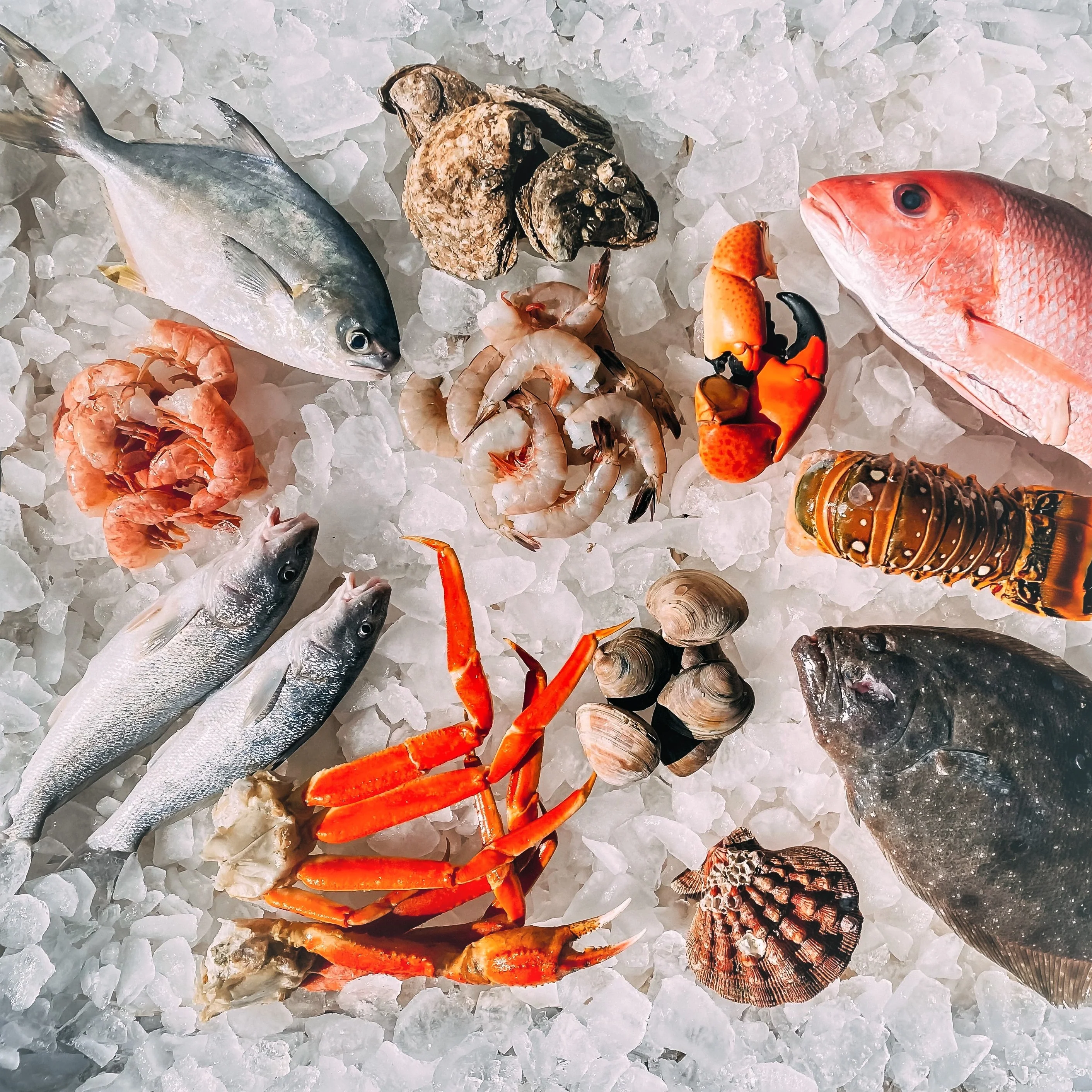Seafood is a cornerstone of a healthy diet, packed with essential nutrients like omega-3 fatty acids, high-quality protein, and various vitamins and minerals. However, the journey from ocean or farm to your plate is complex. While consumers are often advised to look for signs of freshness—a critical factor—an invisible threat can linger even on the freshest-looking fish: chemical residues.
Antibiotics used in aquaculture and pesticides from contaminated waters can accumulate in seafood, posing potential health risks. At Kwinbon, we are dedicated to advancing food safety. This guide will not only help you choose the freshest seafood but also shed light on the importance of safety beyond what the eye can see.

Before we delve deeper into safety, mastering the basics of selecting fresh seafood is your first line of defense.
Whole Fish:
- Eyes: Should be clear, bright, and bulging. Avoid fish with cloudy, sunken, or gray eyes.
- Gills: Should be a vibrant red or pink and moist. Brown, gray, or slimy gills are a sign of age.
- Skin and Scales: Should be shiny, with tightly adhering scales and no discoloration. The flesh should be firm and spring back when pressed.
- Smell: Should smell fresh and briny, like the ocean. Any strong, sour, or ammonia-like odors are immediate red flags.
Fillets and Steaks:
- Color: Should appear vibrant and consistent. Avoid meat that looks dried out or has brownish edges.
- Texture: Flesh should be firm and moist, not mushy or gaping.
- Liquid: Should be clear, not milky or excessive.
Shellfish (Shrimp, Scallops, etc.):
- Smell: Very mild and sweet. Any off-putting smell means avoid.
- Texture: Should be firm and intact. Avoid shrimp with black spots or scallops that are sitting in a pool of cloudy liquid.
Live Shellfish (Clams, Mussels, Oysters):
- Shells: Should be closed tightly or close when tapped. Discard any with cracked or open shells that do not close.
Appearance alone cannot guarantee safety. Modern aquaculture sometimes involves the use of antibiotics to prevent disease in crowded conditions. Similarly, pesticides from agricultural runoff can contaminate water sources and accumulate in marine life.
Why it matters: Long-term consumption of seafood containing residues may contribute to antibiotic resistance in humans and expose consumers to unwanted chemicals.
The challenge: You cannot see, smell, or taste these contaminants. This is where trust in your supplier and broader food safety systems becomes paramount.
While the final verification requires professional testing, you can make smarter choices to mitigate risks.
Know Your Source: Purchase from reputable, established fishmongers and supermarkets known for their high food safety standards. They are more likely to have stringent supplier checks.
Ask Questions: Don’t be afraid to ask where the seafood is from—whether it's wild-caught or farmed. Reputable sellers should be transparent.
Look for Certifications: Seek out products with certifications from recognized organizations (e.g., MSC for sustainable wild-caught, ASC or BAP for responsibly farmed fish). These often have stricter guidelines on chemical use.
Diversify Your Choices: Varying the types of seafood you eat can help minimize potential exposure to a single contaminant.
For consumers, the tips above are crucial. But for the industry professionals—the processors, distributors, retailers, and food safety inspectors—ensuring safety requires robust, reliable tools.
This is where Kwinbon provides critical solutions. Our rapid test strips and ELISA kits are trusted by seafood industry leaders worldwide to detect harmful residues quickly and accurately.
For Quality Control Teams: Our rapid test strips offer a first-line defense. They are easy to use, provide results in minutes right on the processing floor, and are ideal for screening incoming batches of seafood for antibiotics like chloramphenicol, nitrofurans, or quinolones.
For Laboratory Validation: Our ELISA Kits deliver highly sensitive and quantitative results. They are perfect for confirming positive screens, conducting routine monitoring programs, and ensuring compliance with strict international safety regulations (like EU and US FDA standards).
By integrating Kwinbon's testing products into their safety protocols, businesses can proactively protect their brand, ensure regulatory compliance, and most importantly, guarantee that the seafood reaching your table is not just fresh, but truly safe.
Being an informed consumer means looking beyond the surface. By combining traditional methods of assessing freshness with an awareness of modern chemical hazards, you can make better choices for you and your family. And for the industry professionals committed to upholding the highest safety standards, Kwinbon is your partner, providing the accurate and efficient testing tools needed to foster trust and ensure health at every step of the supply chain.
Post time: Aug-21-2025

